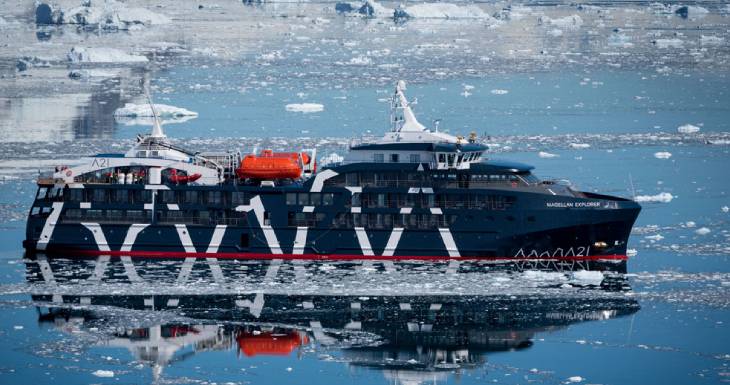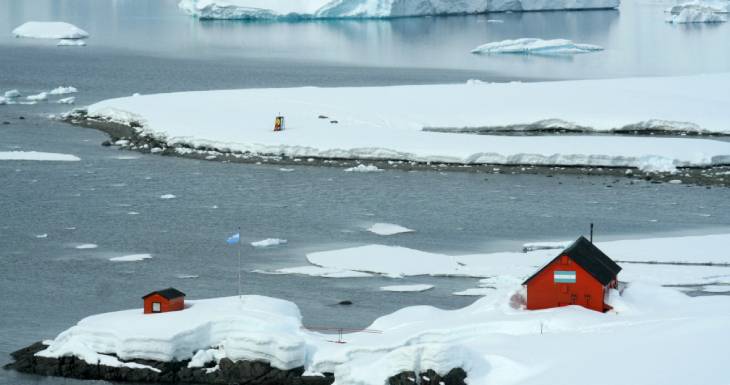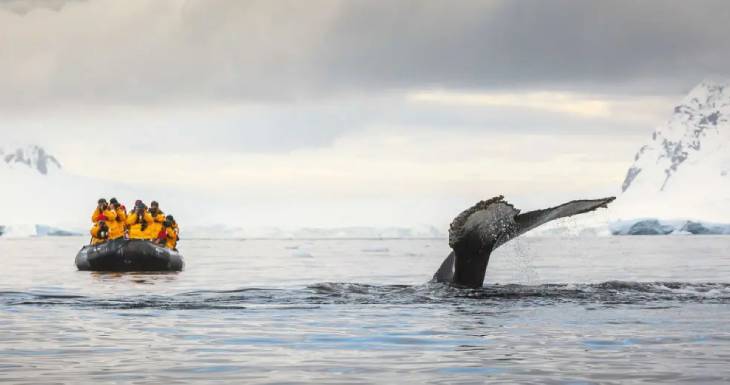Antarctica is the southernmost continent on Earth, located in the southern hemisphere, almost entirely south of the Antarctic Circle.
This icy ocean-surrounded continent spanning some 13.66 million km² is the very definition of inhospitable: regular 50 mph winds, an average temperature of -33°C and its closest point with the continent more than 900 kilometers away. Ushuaia, Argentina.
Although most of the approximately 10,000 people who reside in Antarctica during the southern summer are climatologists, glaciologists, ornithologists and ecologists, in recent years the region has been invaded by ecotourists who brave long flights and stormy seas to get there.
According to official statistics, almost 105,000 people from around the world visited Antarctica between 2022 and 2023 and 71,200 landed on the white continent. These tourists come mainly from the United States, Australia, China, the United Kingdom and Germany.
Drake Passage is the great fear of those who decide to travel to Antarctica. The passage between the Atlantic and the Pacific discovered by the English navigator Francis Drake in 1580 is a blender whose duration is 36 hours with waves up to 10 meters high. Naturally, today's ships are prepared for the crossing, but dizziness, nausea and vomiting are inevitable. It is not an easy or cheap trip, but the beauty and majesty of the Antarctic continent make it unforgettable.

At what time of year should you travel, and what documentation is mandatory:
Given its geographical coordinates, Antarctica is accessible during the months of October to March (that is, in spring – summer of the southern hemisphere). There are 200 points in Antarctica that receive tourism, but only 30 that are visited most frequently. Most of these destinations are located in the South Shetland Islands archipelago and in the Gerlache Strait, northwest of the Antarctic Peninsula.
A visa is not required, although you can stamp your passport as a souvenir at some scientific bases.
As Antarctica does not belong to any government, all nationalities are welcome, but it is necessary to have a permit, which the shipping company itself is in charge of processing. As this is a long trip, in which there will be difficult navigation sections and the conditions will be a bit extreme, it is not recommended to take children under 12 years old.
How to get to Antarctica:
There are usually two ways to get there: one is through cruise trips that do not disembark in Antarctica itself; and another is through expedition cruises that do offer the possibility of disembarking. In both cases, be it a cruise without disembarkation or an expedition cruise, the itineraries contemplate a starting point from Ushuaia, the port city in the extreme south of Argentina that will have to be reached to begin this experience.
As with any type of sea travel, there are different companies that provide different types of services. Some have a limited number of passengers and are characterized by offering a simple service in terms of meals and luxuries. Others have larger boats and are more similar to the services and amenities of a cruise ship and the quality of the service is superior. (the most luxurious include a pool, jacuzzi, sauna, gym, yoga and massage service). It is important to note that the ship will be the lodging place during the trip, this means that tourists will eat and sleep on it while they are in Antarctica.
There are also, occasionally, cruises that depart from Punta Arenas, Chile, or from Cape Town in South Africa, and even from Australia and New Zealand, reaching the Ross Sea, but they take several days just to arrive and are much more expensive.
What insurance should you take out?
This is a key point because insurance is a requirement to travel to Antarctica. And not just any: it has to be one that includes repatriation expenses specifically from there, and a minimum coverage of USD 150,000.

What activities can be enjoyed:
- Wildlife watching: Antarctica is home to an incredible diversity of wildlife, including vast colonies of chinstrap, gentoo, king and emperor penguins. Leopard, Weddell and crabeater seals and elephant seals, whales of all kinds, from minke to humpback, blue to orca.
- Shore Excursions: Many cruises and expeditions offer shore excursions, where tourists can disembark at select locations to explore the unique geography, hike, boat, kayak, climb, scuba dive, snorkel, and even stand-up paddleboard.
- Scientific bases: scientific bases such as Port Lockroy (United Kingdom) and Vernadsky (Ukraine) are visited. The first is a historic base, a protected heritage site from the golden age of exploration, which looks like an old lumberjack cabin. Inside there is a museum and an operational post office, one of the southernmost in the world. In the second there is a bar where they serve homemade vodka.
- Sailing among icebergs: Cruise ships often sail among icebergs and impressive glacial landscapes, giving tourists the opportunity to experience the majesty of Antarctica from the sea.
- Snow Activities: Some expeditions offer snow activities, such as snowshoeing, dog sledding, cross-country skiing, or even overnight snow camping.
- Talks and conferences: On board cruise ships, it is common for talks and conferences to be given on various topics related to Antarctica, including its history, geology, wildlife and climate change, providing tourists with an educational experience.
- Photography: Antarctica offers exceptional opportunities for photography of landscapes, wildlife and natural phenomena such as the aurora australis.

It is important to note that activities in Antarctica are affected by climate, winds and ice conditions. And they are also subject to the regulations established by the Antarctic Treaty and other environmental protection measures to preserve the fragile ecosystem of the region.

Tour operators typically follow strict guidelines to minimize human impact on the Antarctic environment. As expected, the massive arrival of contingents from all over the world opens the debate on the environmental impact that the white continent may suffer.


